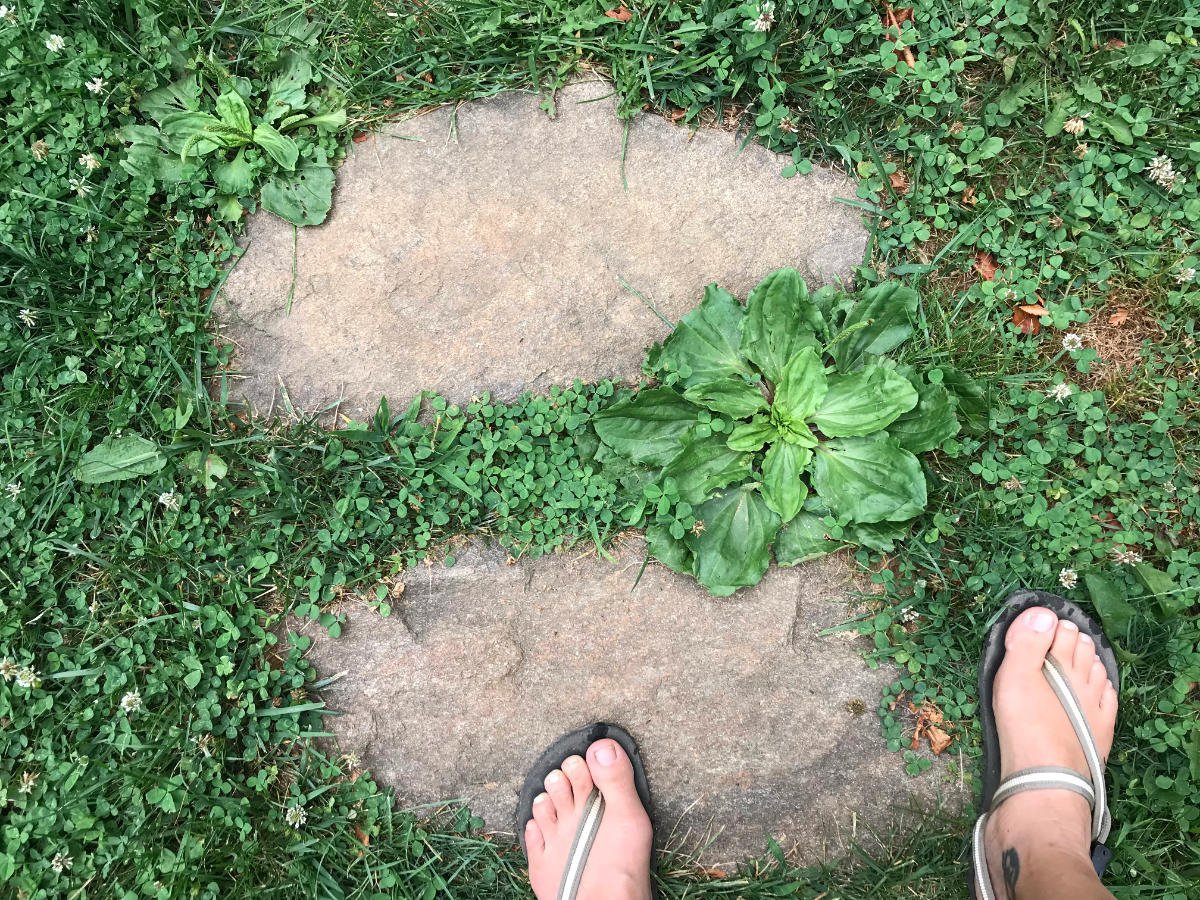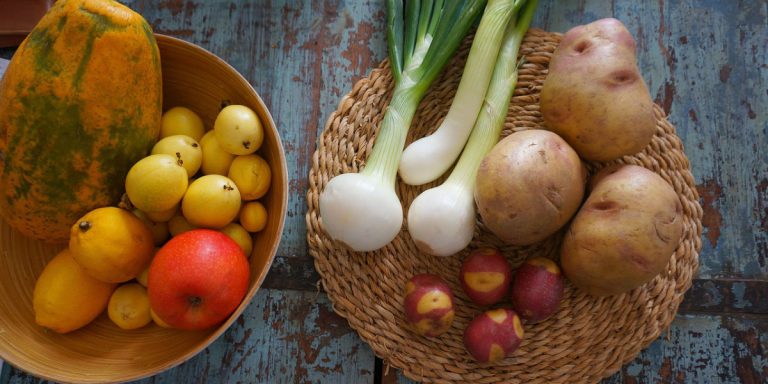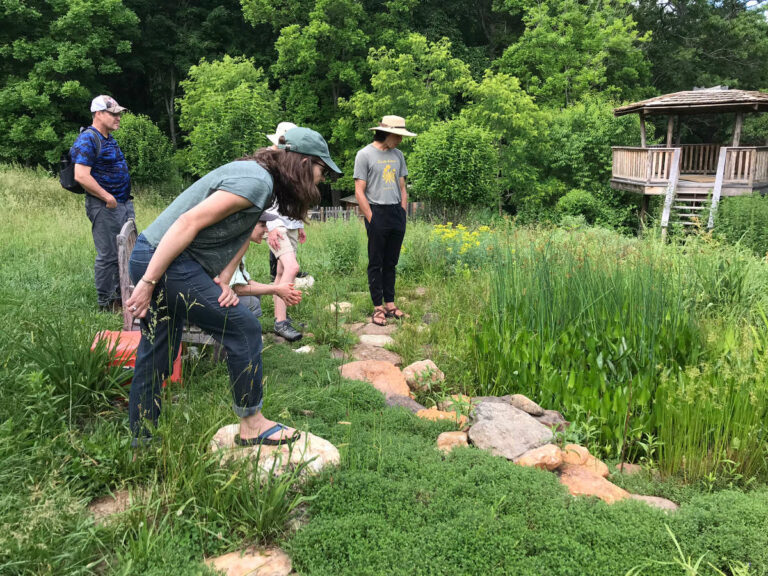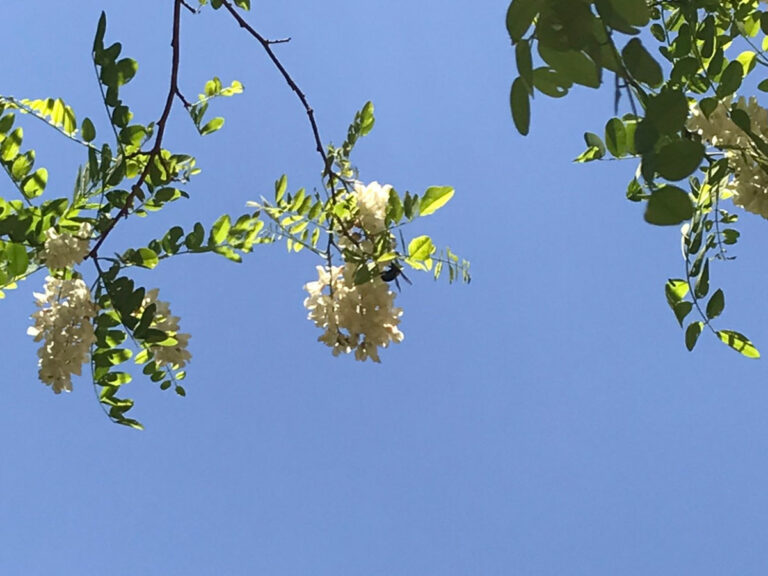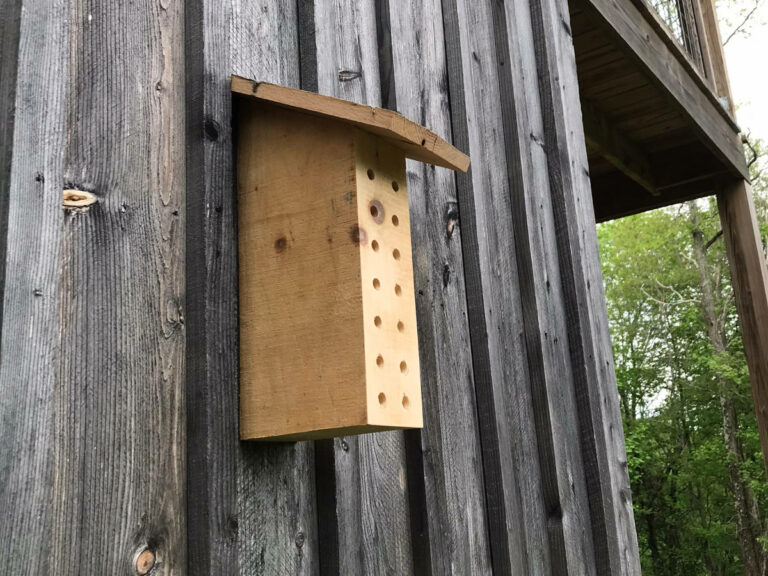Photo by Katy Morikawa
Audio
A New Longing
As I dove head first into love with the wild world through the doorway propped open by the hymenoptera (especially wasps), and towed onward by the irreducible borer bee, I’ve become aware of a longing. Where this longing comes from I am not sure, although surely it has a sturdy shelter in my own heart. It is fed by the magical interactions you encounter when you slow down and listen deeply to the wild world with an open mind. –Like the time I stood under one of our maples, wondering if it was one of those problematic exotic invasive maples like the Norway maple that people keep planting, then took a deep breath and thought to myself, “It smells right. If it isn’t native, it plays well with the others.” Shortly thereafter, I learned that it is indeed a sugar maple, and that we are at the southern edge of its native range. That got my heart racing.– *Update: Drat! This is not a sugar maple but a red maple (probably). Still native but (sigh) I has a long way to go to get good at plant identification it would seem.
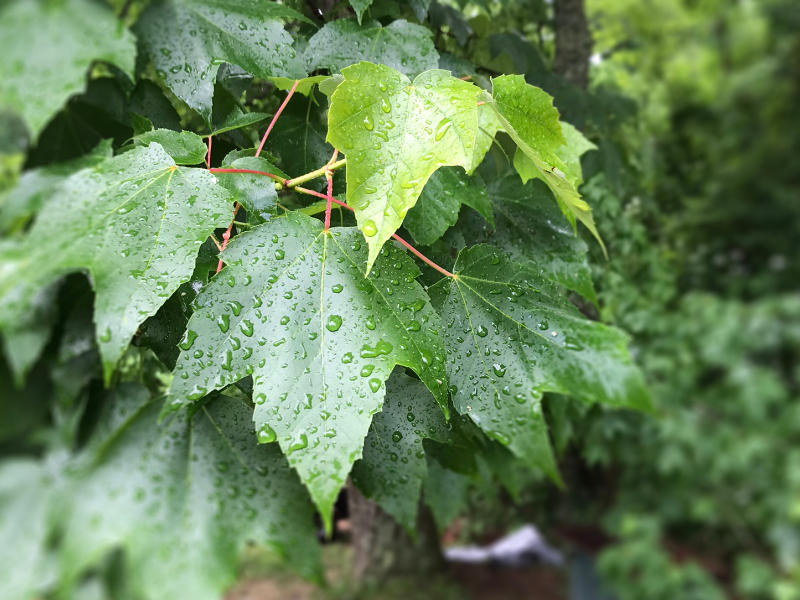
I’ll admit I wonder sometimes if this longing comes from somewhere else too. The pull of it, this drawing toward something still mysterious and unfurling before me–might it come from the Earth itself? Or perhaps come as a song from the lives of all the living things around me? Or the wider bioregion itself? Surely it arises in the quickening connections I’ve made with weeds and trees and bees and all the life forms I used to breeze by with nary a thought. I don’t know the answer to the source of my longing, and proposing an answer feels presumptuous and hasty. Wherever it comes from, I find myself longing to create a more diverse native ecosystem on this piece of property where we built our house, to coax more wild beauty from this place. Sun dappled shade, the smell of a native tree, the shocking beauty of rare native plants only recently seen for the first time, the subtle beauty of a native shade bank by the Little River–these and more add voices to the song which calls to me like a running stream. I have to have it! I feel tempestuous and stuborn and ecstatic, even as I stumble my way toward learning what I need to learn to fulfill this wish.

No Ornamental Gardens
I don’t want and can’t afford an ornamental wildflower garden. The deer, the neighbors’ goats, I can’t afford the fencing and I’m just not in the mood. I want a whole different wild ecology outside the fence. What we have on the property where we built our house arose less by design and more by accident when the cow pastures were let go in the Sixties and Seventies. It is a mostly dry woods rising above a creek valley, filled with poplar and beech and maple and locust, wild cherry and walnut, and the occasional hickory, oak, dogwood, and sassafrass. The understory grows a dense deciduous shrub (name as yet unknown but not mountain olive) that seems to crowd out almost everything else except along the sunny margins. Inside the woods it is dry in summer, a little itchy, bland of detail, sparse even of mushroom and lichen. I haven’t found a single spring ephemeral. On the margins at sunlight’s edge, comes multiflora rose (a hated non-native invasive bramble to some, but I still love the fragrance in late May/early June), blackberries, the unimaginatively named stick weed (Verbesina occidentalis), and of course, the invasive Asian bittersweet vine everywhere strangling the trees, and tearing down or choking the finer-barked among them (poplar and maple especially)! Lower down, along our driveway, ferns grow thickly amongst beech trees growing along white quartz outcroppings. It’s actually rather pretty, though the trees still look half diseased and everywhere I see signs of distress in the forest. Maybe I’m wrong? Not everyone sees what I see. (Update: Michael just reminded me that the emerald ash borer has just finished completely killing all the ash trees in our woods, and we have a stand up the hill from the house that’s all dead now).
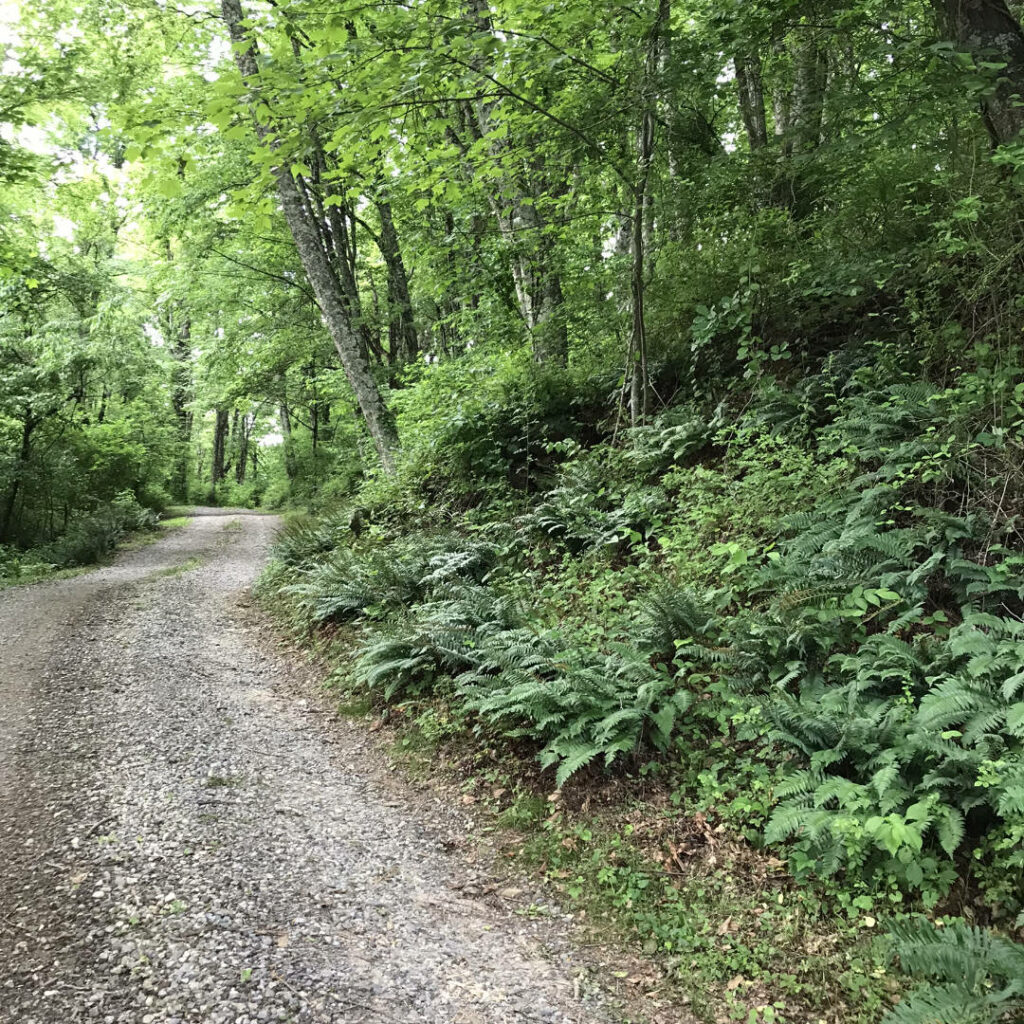
All the cleared areas, most of which we cleared while building the house, we now simply mow and weed eat. I plan to encourage Michael to reduce the weed eating, at least around the trees because apparently you can accidentally girdle and kill a tree that way! I tried early on to establish some ornamental plantings. My granny did that while they lived on their farm in the mountains of North Carolina, gardening just a little here and there with some favored ornamentals. Like lipstick on a natural beauty, they accented the wild landscaping nicely. But all of my plantings either died swiftly, or are by now hanging on by a fingernail. I am left with the native plants I have at hand or, hopefully, native plants that I can reintroduce here.
We have more game than in years past: deer aplenty, rabbits and rodents and the occasional squirrel, racoon, groundhog, and opossum. Many birds, though few hawks, eagles, or owls. We have turkeys that might have been reintroduced–a large flock I see in the spring and fall. A rare fox or two, and an even rarer bobcat. He was magnificent, Michael said. Last, but definitely not least, we have a family of bears who make me nervous to go into the woods alone! Still, with all this, something feels missing and I don’t really know what. I don’t know what a balanced native ecosystem looks like here. Is that even possible with so much farmland around? For as green and rural as Floyd is, I find so much of the plant life poor, lacking a wild grace, the land held in private hands and managed in largely unimaginative ways. I must include ourselves in that. Let’s face it, mowing is a no-brainer for keeping the wild at bay (for me, it was snakes, ticks, mice, oh my!), and we made that choice early on. But now my imagination has popped open and I’m dreaming of greater richness, more wild beauty, something more satisfying to the soul. But this time, unlike times past, I must do it without landscaping.
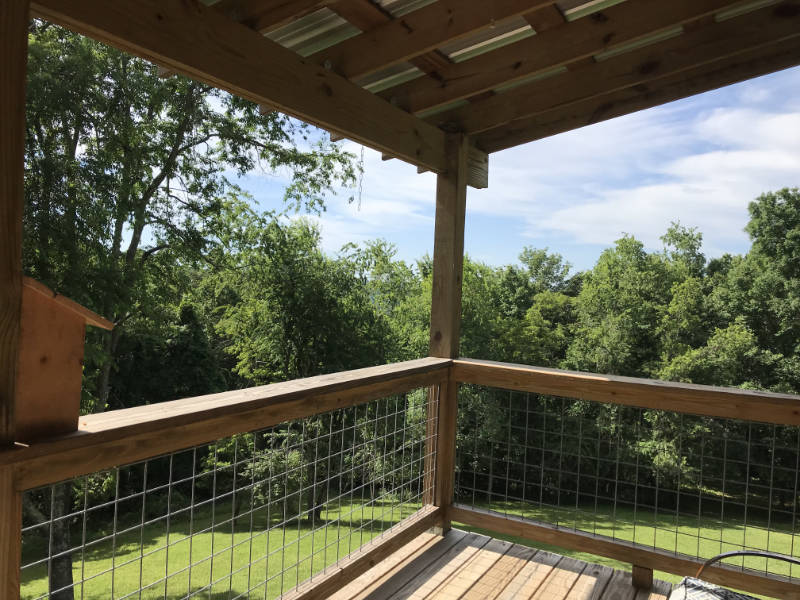
Understanding Wild Systems
To do what I want to do, I will need to understand wild systems, what’s possible here on this particular piece of land, what might flourish with a little help and minimal maintenance. I want to understand ways to provide both cover and food for a greater diversity of animal life while growing a more pleasing plant life. Honestly, the plants are a priority for me. I’m a plant person and have been working with plants since I was a teenager. I go away from it and come back to it. It’s an old love and I fall back into it very easily. I want to reach back to what the land was before European migration brought a flood of new species and disruptions of all kinds–from overhunting wild game for furs in the eighteenth and nineteenth centuries to clearing land for pasture to clear-cut logging for timber to human practices of mowing large areas around houses even way out in the country today.
Invasive Non-Natives
As I look around, I am struck particularly by the radically disruptive effect of so many non-native species introduced over a relatively short period of time in North America, from kudzu to the fungal blight that killed the American chestnut–a keystone food tree for countless wild and human beings, to those pesky invasive carp in the rivers in Illinois. The rate of both accidental and intentional non-native species introduction has been staggering and leaves a tangled maze to navigate. You can’t put the genie back into the bottle with some of these things. I suspect but don’t know for sure that the understory shrub in our woods is an invasive non-native. Our own Asian bittersweet vine is a puzzle I haven’t begun to solve. And I just learned about fescue! Yes, your lawn grass and mine is a non-native invasive groundcover that does so well in most of North America that it crowds out so much else that grew at that level in the landscape for millennia.
Asian Bittersweet
Here is a photo taken looking southeast across our lower clearing towards the woody edge. Two years ago after a bad ice storm, Michael and I cleared downed trees and brush for hours and built up a brush pile along the edge of the clearing. This year we can see that we have created Vine Central! The brush piles are now completely covered by vine and the entire face of the woods above the piles is covered in vines nearly to the top of the tree canopy. We will pay for that mistake with hours of labor to cut them back and poison the cut ends, a nasty business I detest. Take-away: No brush piles on the sunny edges of clearings where you don’t know what kind of vine situation is going on in the woods! If you’re going to do a brush pile, drag it deeper into the woods. But it’s all a learning experience and I will not make that same mistake again.

The Myth of Eden
As I’ve investigated, in somewhat meandering fashion, I’ve begun to take in the scope of species migration and evolution. We are not, nor will we ever be, able to find our way back to some pristine Eden before Europeans arrived. Not only is it too big and daunting to be possible, but humans have been modifying the environment since they arrived, whenever that was many thousands of years ago (20,000 or more at last count [1]), with spear and fire in hand. As recently as the 1600’s, great evidence was seen and well-documented in New England of the management of the forest by various First Nations peoples. Fire clearing for agricultural purposes or to improve hunting and travel ways was practiced regularly. In fact, the forest was so cultivated, that early descriptions called it beautiful, open and graceful like a park. Only after these people died of European diseases did the forest grow up again, and we never really knew what the first peoples did here to maintain their way of life. It’s said that we should consider our modern day wilderness a new thing because for thousands of years the wild evolved in the presence of native fire. Of course, we do our own spectacular job of bulldozing and paving under endless acres of the wild. The wonderful reporting and storytelling on this came to my ears from this episode of Backstory: “Untrammelled: Americans and the Wilderness,” Episode #0133, and the segment, “The Forest ‘Primeval.'”
The Local Resources
So I’ve been touring my friends’ gardens and orchards. Many of them being more artistic than steely-eyed pragmatists have by accident or design created good permaculture systems. So far, all of them are bit too cultivated for me, even though they’re beautiful and inspiring. Partly I don’t have the money to transform our rather poor soil, nor to provide fencing and watering and whatever else we’d need to grow food in earnest. Partly I really want to restore a native ecology here. I tend to root for the underdog, to seek out the exiled, and native plant communities feel a little that way, certainly in the wider human community.
The Pollinator Flower Movement
Earlier this spring, as I was pondering food for native bees (inspired, of course, by the carpenter bees), I stopped and talked with this really nice woman at my farmer’s market. Her little local apiary was selling native pollinator plants, and so I picked up a few: a sourwood tree (legendary around here in Appalachia for creating delicious honey) and a low perennial called anise hysop. Being a researcher by reflex, I looked them up and discovered to my dismay that anise hysop, while not invasive and considered a premiere feeder for pollinators, is really not native to Southwest Virginia. It comes from central and north-central North America (the Great Plains and Great Lakes regions).[2]
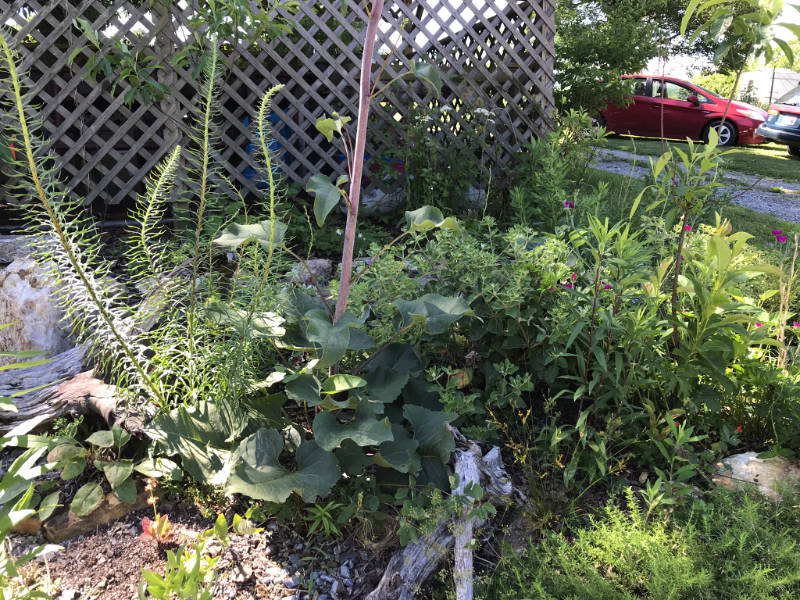
Native Plants
So, that began a quest for better native plant resources, which led me on a tour of Wood Thrush Natives, a native plant nursery here in Floyd, with a local garden club. In addition to an eyefull of rare and beautiful native plants, I got a good dose of the pollinator wildflower movement now in full swing in Floyd County. The garden club had a list of pollinator flowers they were shopping for, and I learned about the Floyd Flower Power initiative that’s fairly new here. Floyd Flower Power’s mission is to encourage pollinator gardens in the county, because other people have noticed that we don’t have that many flowers around the county. They recently gave away plants and seeds at our farmer’s market, and they posted the photo below with this caption on Facebook: “We distributed over 60 packets of wildflower seeds at the Farmer’s Market in June, gave out some Everglade Tomato seeds, and other vegetable seeds. Plants given out included iris, daffodils, lambs ear, hostas, and day lillies.” [See post] Daffodils, hostas, daylillies, and lamb’s ears are all native to Europe or Asia or Africa, not to North America. I sympathize with the enthusiasms and biases of gardeners. I remember decades of disinterest in our generally less showy native plants. And I can’t quite fault apiaries, whose focus is to care for the domestic non-native honeybee, for whom ideal flower food probably lies with plants from its homeland (though those will all come from a very different climate, so perhaps this is a fine point not worth arguing). All this does mean that I will need to be more discerning and learn a lot more to pursue the thread I want to follow. In the meantime, I planted my anise hyssop inside my small vegetable garden fence and am planning to plant the sourwood tree (definitely a native) in our lower clearing this fall.
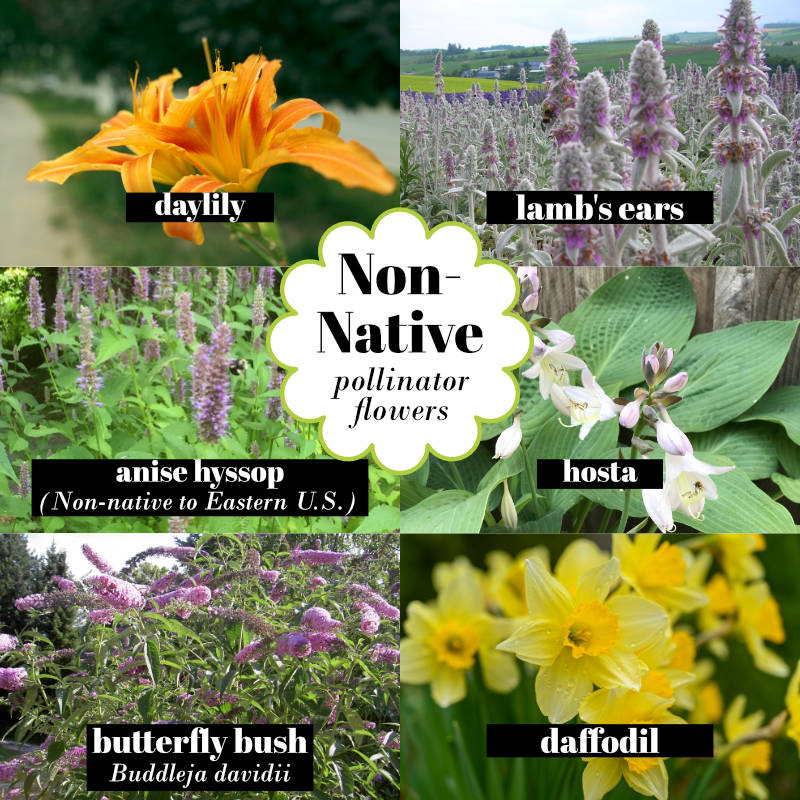
Ecological Restoration
So, it turns out that what I want to do has a name! I feel like a dummy, but it’s called ecological restoration.[3] In the case of our land, the ecological degradation is much more subtle than in cases where rivers have been diverted underground, forests clearcut, or wetlands paved over. I found a federal agency dedicated to helping landowners conserve natural resources. This is the USDA’s NRCS, the Natural Resources Conservation Service. It was known before the 1990’s as the Soil Conservation Service. And a nice agent based in our local field office has agreed to come out and do a site visit to evaluate our land! He may tell me all is well, but I’ve been studying the Natural Communities Classification system for Virginia and I can’t find a description of our woods in it. I suspect that what we see in our woods is the aftermath of intensive pasture grazing compounded by invasion by non-native vines and shrubs, rather than a natural community. But we’ll see! I can’t wait for the NRCS agent to come enlighten me. Even if all I get is a boring depressing report, I’ll at least have a place to start. He’s a wildlife biologist and knows a lot, so I can’t imagine I won’t learn a lot. Actually, I got that tidbit about fescue from him during our first phone call!
Not Your Average Banana
Meanwhile, I’m hunting for native fruit trees we might grow here. I figure they’ll survive the deer and provide food for my bees, animals and us! I’m kind of obsessing over pawpaws right now. Michael’s kneejerk reaction was to call them a tricky nuisance because they attract all kinds of wildlife. But isn’t that the idea? And they are totally native, high in calories and nutrients, and making a comeback. Wikipedia says they’re being called the “hipster banana!” Because eating bananas carries a huge carbon footprint plus all that exploitation that usually comes with harvesting tropical fruit. They even have their very own festival which I want to go to: The Ohio PawPaw Festival coming up in September. Plus, I got a taste for their tropical cousin, the soursap, when we lived in Micronesia and Hawaii. I love it!
Appalachian Dreaming
As I dream of my more beautiful native landscape, these Appalachian tropical cousins–pawpaws, passion flowers, spider lilies, hibiscus–whisper to me. Because, remarkably, there are quite a few native plants here who most closely relate to tropical plants. And the thought comes, sudden and unbidden: Might I be able to create my own tiny Appalachian tropical paradise, a place that remembers the tropics I so loved and where I grew up, but here in this temperate place? Not to abandon the important work of ecological restoration before I’ve begun, but to accentuate it. Will I have the time? Money? Energy to do it? If not, I am loving the journey and maybe this will inspire you or someone else will pick up their own parallel work of discovery with their own bit of ground.
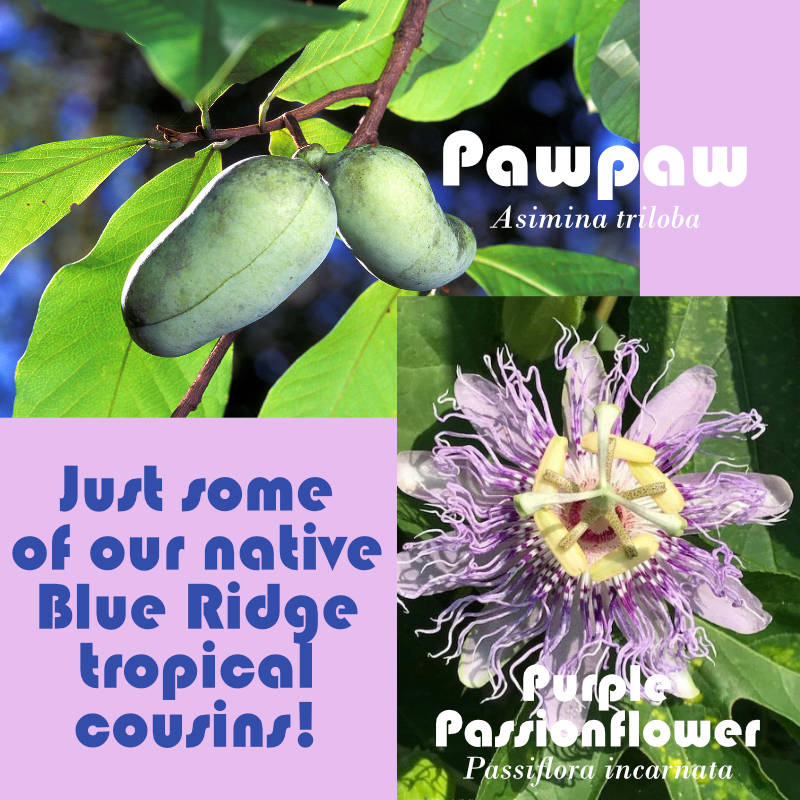
Links
- USDA’s NRCS https://www.nrcs.usda.gov/wps/portal/nrcs/site/national/home/
- The Natural Communities of Virginia Classification of Ecological Groups and Community Types https://www.dcr.virginia.gov/natural-heritage/natural-communities/
- The Ohio PawPaw Festival https://www.ohiopawpawfest.com/
- Wood Thrush Natives https://woodthrushnatives.com/
References
- Montaigne, F. (2020, January). “The Fertile Shore.” Smithsonian Magazine. January 2020. Retrieved June 21, 2022 from https://www.smithsonianmag.com/science-nature/how-humans-came-to-americas-180973739/
- Agastache foeniculum. In Wikipedia, The Free Encyclopedia. Retrieved 12:45, June 24, 2022, from https://en.wikipedia.org/w/index.php?title=Agastache_foeniculum&oldid=1094321340
- Restoration ecology. In Wikipedia, The Free Encyclopedia. Retrieved 12:53, June 26, 2022, from https://en.wikipedia.org/w/index.php?title=Restoration_ecology&oldid=1087785347
- Oldenburg, D. (1997, June 16). “Consummate Consumer.” The Washington Post. Retrieved June 26, 2022 from https://www.washingtonpost.com/archive/lifestyle/1997/06/16/consummate-consumer/1388258c-5642-470b-bc91-5d8151dfacf3/

